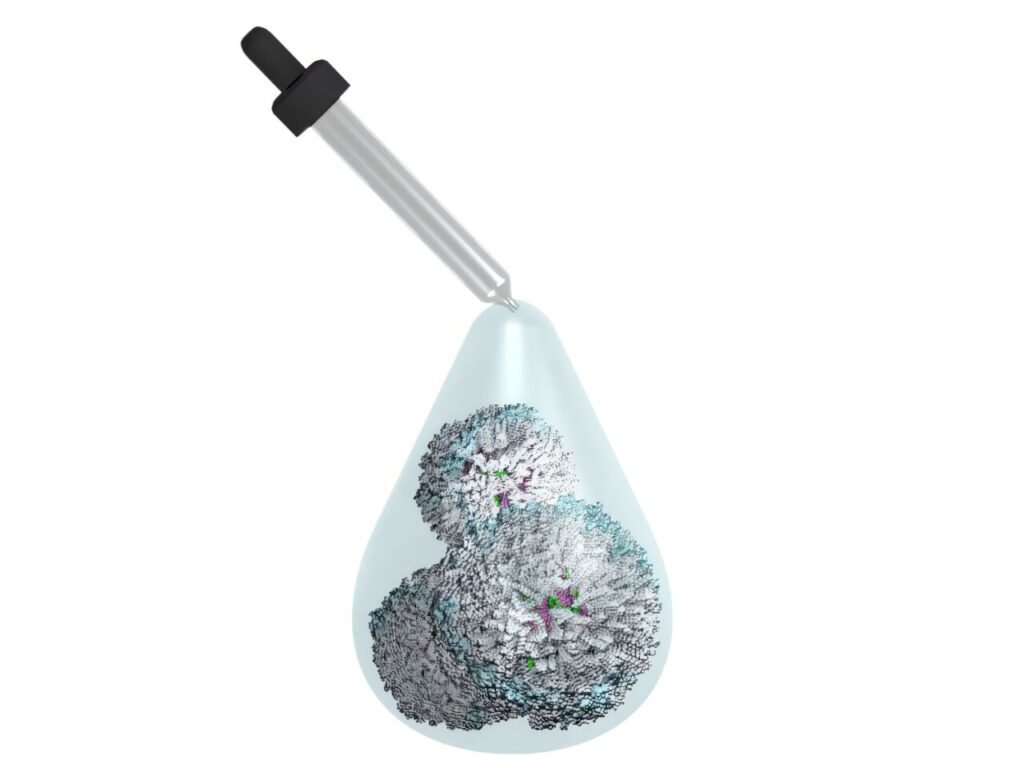Northwestern Medicine investigators have developed first-of-its-kind eyedrops that use synthetic nanoparticles to help the eye regenerate cells that have been damaged by mustard keratopathy, or exposure to mustard gas, and other inflammatory eye diseases, detailed in a recent study published in the journal npj Regenerative Medicine.
Limbal epithelial stem cells are responsible for maintaining and regenerating the cornea’s epithelium, the outermost layer of the cornea. The loss or dysfunction of these cells can lead to limbal stem cell deficiency (LSCD), which can in turn cause persistent breakdown of the corneal epithelium and, eventually, blindness.
The disorder can be caused by genetic mutations but also chronic inflammation and severe external injuries, including the exposure to sulfur mustard or mustard gas, which has been historically used during wartime.
Topical corticosteroids have commonly been used to treat inflammation preceding LCSD. However, adverse side effects from long-term steroid use can occur and often steroids do not promote wound repair.
In response to an urgent need for new targeted therapies, investigators created novel restoring eyedrops containing synthetic lipoprotein nanoparticles developed in the laboratory of Shad Thaxton, ’04 MD, ’07 Ph.D., ’06 ’08 GME, associate professor of Urology and co-senior author of the study.
These nanoparticles were designed to mimic some properties of a specific type of lipoprotein called high-density lipoproteins (HDLs), which are naturally found in the bloodstream and can help the body regulate many functions, including inflammation.
“By taking a page out of nature’s playbook, we could begin to synthesize these types of materials and be able to control their sizes, shapes and compositions so that we can take advantage of some of their most beneficial properties such as reducing inflammation,” said Thaxton, who is also a member of the Robert H. Lurie Comprehensive Cancer Center of Northwestern University.
“The therapeutic possibilities of these materials are tremendous as they can also be programmed to carry a broad range of active drugs that work synergistically with the native wound-healing ability of the HDL nanoparticles,” said SonBinh Nguyen, Ph.D., professor of Chemistry in the Weinberg College of Arts and Sciences and co-senior author of the study.
The investigators then administered the eyedrops to mice with different phases of nitrogen mustard cornea injury, an experimental model developed by Han Peng, Ph.D., associate professor of Dermatology and co-senior author of the study. Mice with acute inflammation received eyedrops daily for three days and mice with chronic, long-term injury received eyedrops daily for a total of 14 days.
Using advanced imaging techniques and PCR analysis, the scientists discovered the eyedrops not only reduced inflammation in the eyes of the mice but also restored damaged limbal epithelium, which enabled the cornea to essentially heal itself and recover.
“This is the first time that this type of reversal of LSCD has been shown,” said Robert Lavker, Ph.D., Professor Emeritus of Dermatology and co-senior author of the study.
The findings demonstrate how the novel eyedrops could be a promising treatment not only for mustard keratopathy but also for other inflammatory corneal diseases, such as bacterial keratitis, alkali burns and dry eye.
“To our knowledge, this is the first demonstration of a topical therapy that can resolve ocular inflammation, conjunctivalization and corneal stromal neovascularization. With the myriad of diseases having a component of LSCD, we believe that the nanoparticles have broad therapeutic potential,” the authors wrote.


